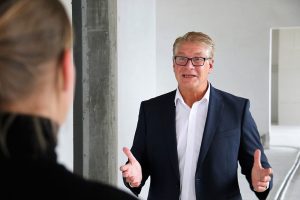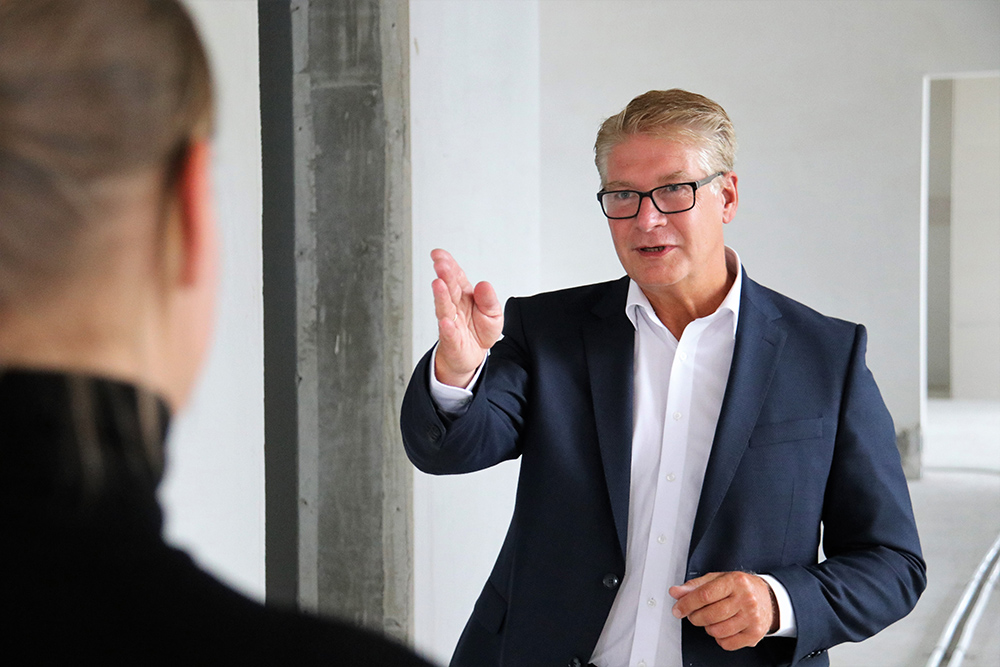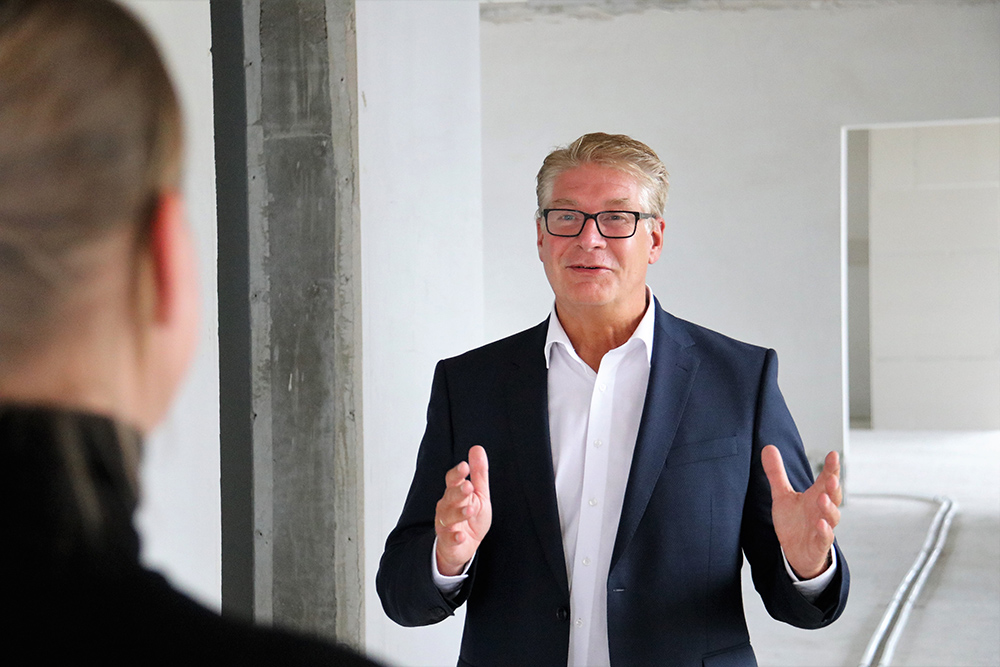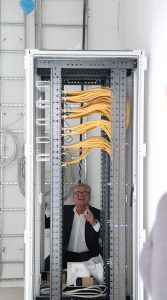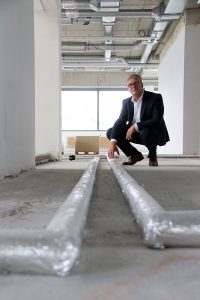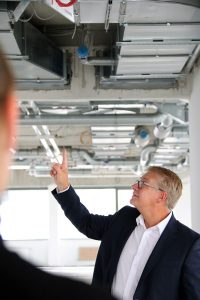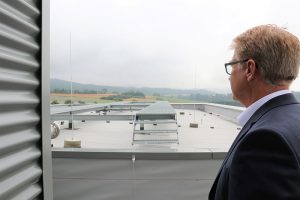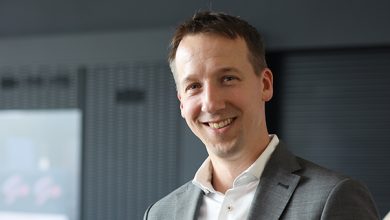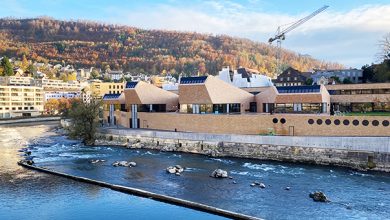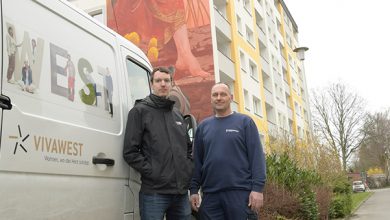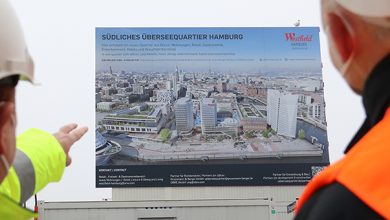Bernhard Tillmanns has a vision. He wants to change the buildings of the future. He wants to make them flexible. Versatile. Updateable. And already today!
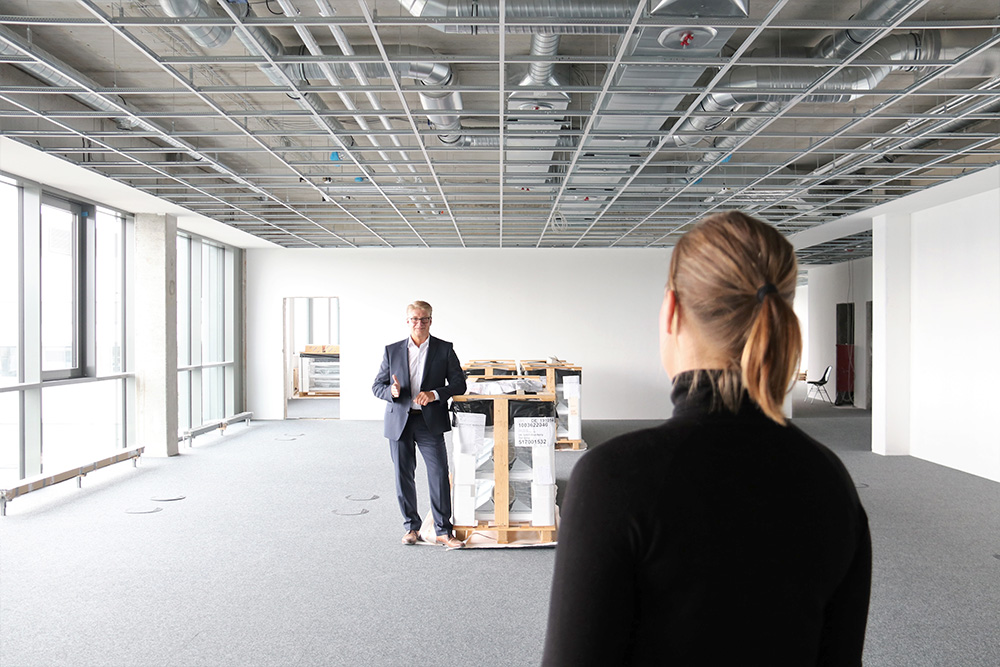
Shell construction in various stages of completion, bare concrete, cable harnesses and ventilation systems. Site visit to the new company building 38 in the Blomberg headquarters of Phoenix Contact. Just the right setting for a conversation with an expert in building automation.
Bernhard Tillmanns seems like someone who knows exactly what he wants. Calmly and confidently, he asks curious questions about his field of activity and tells of his career with a sonorous voice. A career with a difference, because the current Director Global Industry Management Building Technology had already had a successful professional life before he set about unhinging the world of building automation.
In his first professional life, the man from the Lower Rhine is initially a successful company founder. Just one year after his training as an electrical engineer, he set up his own business and was head of a company with up to 50 employees for 17 years. “Life was my university”, he describes his professional career, not without pride.
This company focused on the development of software platforms, energy management systems in and for buildings and security solutions. This makes it clear that Tillmanns does not have a classic background as a building automation specialist, but that his professional home is actually the world of IT. Already in the course of these activities he made first contacts with Phoenix Contact. Interestingly enough, initially in a competitive environment. Later, this turned into a cooperation, because the products from East Westphalia convinced the businessman.
A technological flirt with professional consequences. Tillmanns became aware of the company itself from his enthusiasm for the product. And in the middle of 2015, the long-time entrepreneur actually dared to take the step into the company Phoenix Contact. With the aim of turning the topic of building automation into a success story. Of course, the building automation products had been well known for quite some time. “But the statement of the management was,” he recalls, “that Phoenix Contact did not need a pure building automation specialist who would only develop the existing business, but someone who was capable of developing a technological and entrepreneurial strategy for new trend topics in building automation. The right challenge for the long-time entrepreneur.
“The top dogs in the building market were completely different back then,” says the 54-year-old manager. “But we had an ace up our sleeve. In October 2015, Phoenix Contact took over the Dresden company SysMik. Its founder and boss, Dr. Gert-Ulrich Vack, had founded the start-up in 1990 and turned it into a small but fine noble forge in the field of building automation.
The Modular Controller “ILC 2050 BI” is based in its open system structure on a software framework, which is well known abroad. A stroke of luck for Tillmanns: “But hardly anyone in the German-speaking world knew about it. And for me, as a person from the IT business, it was immediately clear that the combination of IT and building automation is possible here, which frees itself from the classic component thinking and creates space for new perspectives.
Tillmanns and his team got going. “Quite early on, a colleague and I invented the name “Emalytics”, which was intended to make it clear that we were pursuing a platform-oriented approach. This took not only the building market by complete surprise, but also our direct market companions,” he reveals with a mischievous smile.
The IT expert patiently explains the differences: “Classic building automation works with programmable logic controllers (PLC). For example, you want to automate a ventilation system. How the automation is to work is defined in a functional description. An application engineer then sets this up in a suitable programming language and then converts (compiles) it into a code that can be read by the controller. If one wants to change the function of the ventilation system, the programmer must act again and change the code and then compile it on the PLC. During this time, the affected system is at a standstill. In other words – the effort is relatively large and therefore expensive. No wonder that a completed building automation system is a rather rigid structure that hardly any operator wants to touch”.
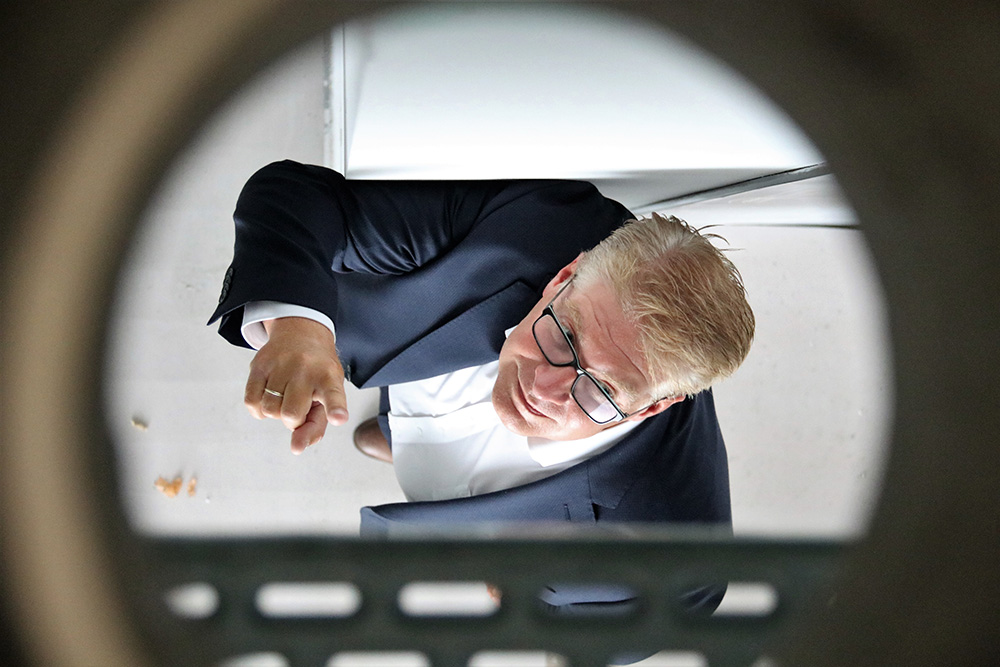
The reader of the lines can guess where the innovative industry expert is starting: “In contrast, at Emalytics every automation station is part of a network. All functional processes are represented in a software platform. This eliminates these compiled and therefore rigid programs.
Emalytics works in such a way that the control instructions of the automation process can be virtualized, modified and then rolled out to the infrastructure by means of a software update. After I realized this, I realized: This is like IT business, I know this. That’s why our approach focuses much more on the software, i.e. Emalytics”.
If the reader of these lines feels reminded of disruptors like Elon Musk from Tesla, he is not wrong. “We have created application libraries with visualization elements that result in digital twins of supply processes in the cloud. In this way, we can contribute to automated operational quality monitoring of supply and comfort processes, which clearly distinguishes us from our classically operating competitors. Suddenly, the building can be handled much more flexibly, can “learn” new functions without major structural changes and can integrate new elements into the higher-level control software Emalytics. The building becomes updateable”.
Bernhard Tillmanns was aware that this new approach and the new possibilities would not automatically become an economic success. “System integrators are our customers. These experts stand between investor, architect and ultimately the operator. They take up the requirements, translate them into what is technically feasible and ensure that they are implemented. And they are usually well utilized. But with our new way of thinking, new skills and knowledge are also needed on their side. Training is needed, concerns must be addressed and arguments strengthened. We intervene deeply in the well-rehearsed structure of the building industry with investor, architect, executing companies and finally the operators”.
In the meantime, Phoenix Contact has built up a whole team of project managers, application engineers and field service engineers in order to be able to adapt precisely to the needs of the customer in every phase of implementation. With success: “We have focused on initial lighthouse projects in order to be able to demonstrate this new way of thinking about building automation. To do this, we had to convince the investor and planner level to clearly demonstrate the long-term advantages of open system architecture. We held workshops with investors, architects and specialist planners and worked with them to develop the appropriate building system designs.
“Our” buildings are not rigid shells with almost unchangeable functions. They are living, versatile buildings that can learn and change. And so they can also save significant costs over their intended service life. Understanding and treating buildings as IT projects – that is our approach. Building IOT means that buildings become completely updateable. This means that they are always securely installed, even in the increasingly important area of security.
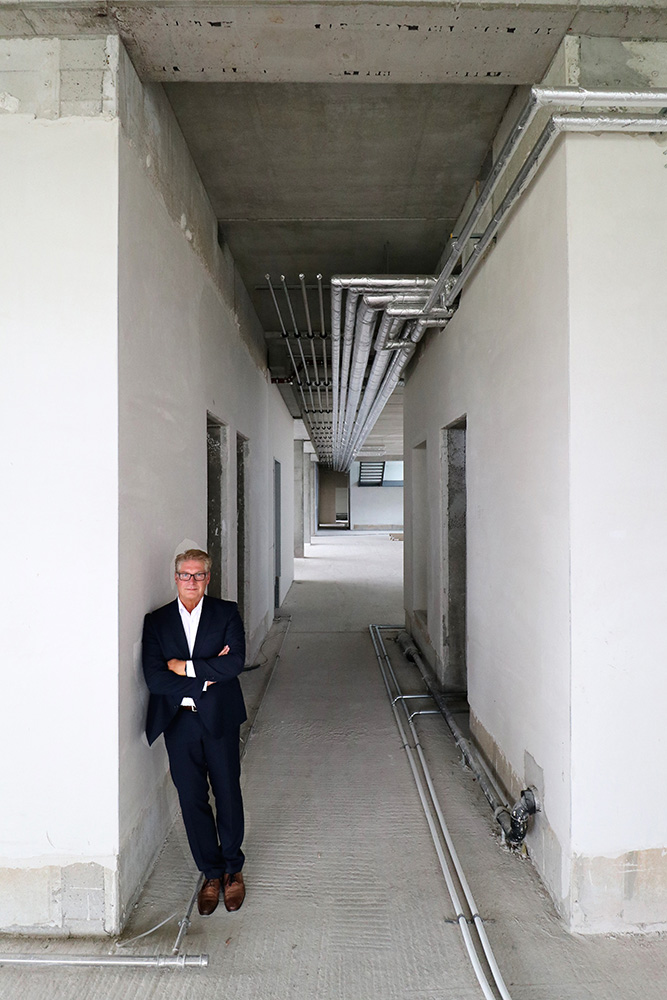
Listening to Bernhard Tillmanns, you can feel the enthusiasm for the topic and sense the potential: “We talk to our buildings and listen to them. And in doing so, we take the subject of building automation to a whole new level.
Phoenix Contact Gebäudeautomation
Der Disruptor – Veränderung im Facility Management
Das schlaueste Gebäude in 200 km Umkreis
